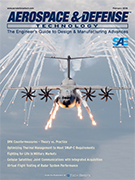Magazine

Momentum: February 2015
2015-02-02
Taking on the Valeo Innovation Challenge Two Canadian teams-the University of Ottawa and the University of Waterloo-finished in the top 3 among about 1,000 other universities from around the world in this challenge devoted to spurring innovative ideas for transportation. Colorado State University designs fuel-cell plug-in hybrid system Competing in the EcoCAR2 competition using a Chevrolet Malibu, the Colorado State team designed a system that features a 15-kW polymer electrolyte membrane fuel cell system, an 18.9-kW•h/177-kW lithium-ion battery, and a 145-kW motor. Cal State Fullerton combines art and engineering Team's submission on its Formula SAE car won first place in the second annual Generation Auto video contest organized in part by SAE International. Collaborative research project leads to potentially swarming VTOL UAVs The AVIGLE VTOL (vertical takeoff and landing) unmanned aerial vehicle was developed via collaboration by a variety of entities for a variety of applications.















